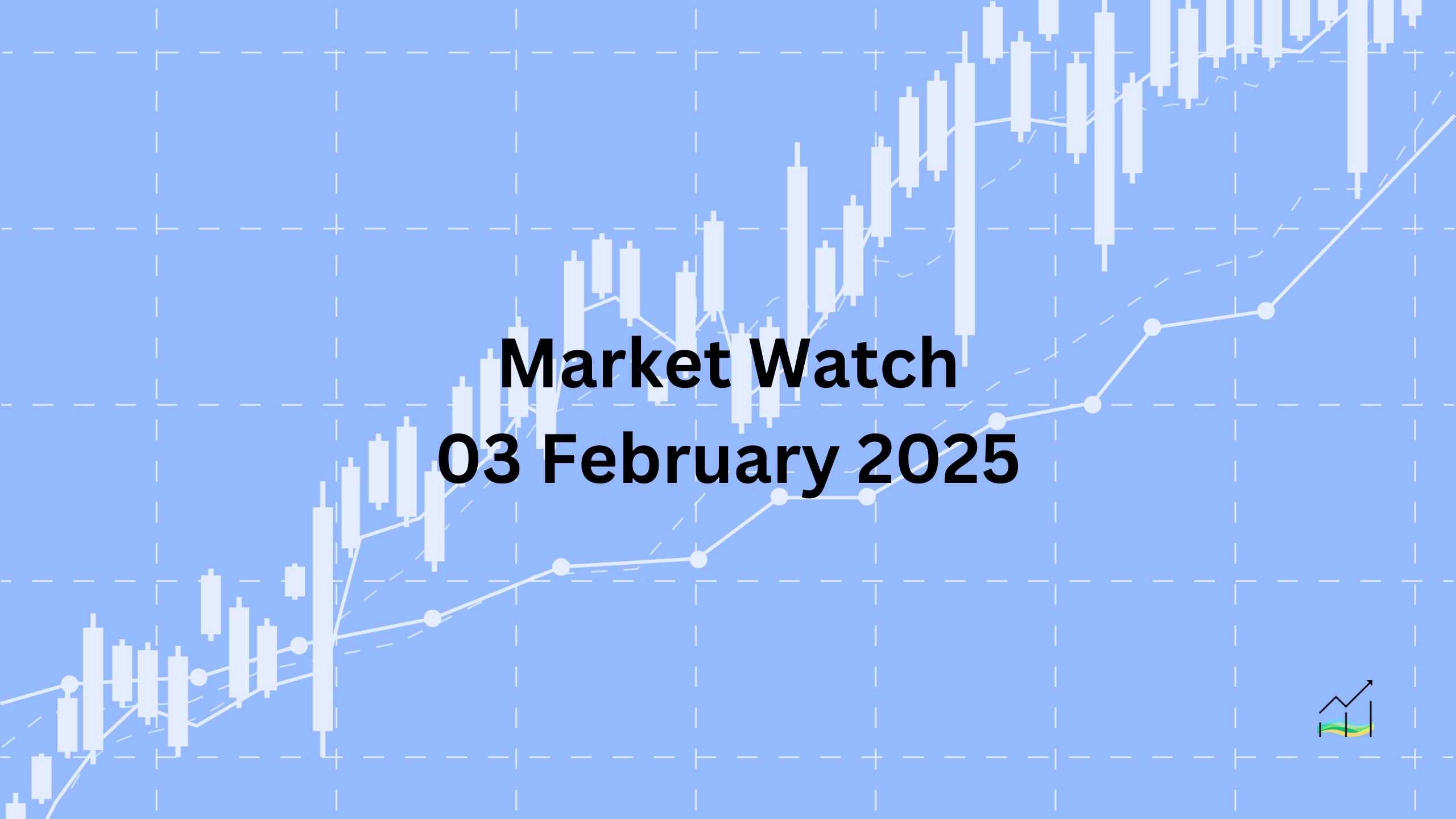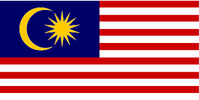03/02/2025 Market Watch

Market Turmoil as Tariffs Take Effect
The United States has officially imposed 25% tariffs on Canada and Mexico, along with 10% tariffs on China. Despite these measures, skepticism remains in the market, with speculation that the tariffs on Canada and Mexico may be short-lived. Reports suggest that President Trump will discuss the situation with Canadian Prime Minister Trudeau and Mexican President Sheinbaum today.
The US dollar initially surged but did not sustain its gains. The Canadian dollar and Mexican peso took the hardest hit, which was expected. However, the euro and Australian dollar also saw notable declines. Equities held up well last week despite the looming tariffs, but pre-weekend losses in North American markets signaled growing concerns. Today, reality set in, with sharp losses across major global markets. Hong Kong remained relatively stable, but Taiwan and Japan faced declines of 3.5% and 2.5%, respectively. In Europe, the Stoxx 600 dropped 1.5%, marking its worst decline in over a month. US index futures indicate further losses between 1.3% and 1.6%.
In the bond market, European benchmark 10-year yields fell by 4-5 basis points, while the US 10-year Treasury yield remained steady near 4.55%. The US two-year yield rose nearly eight basis points to 4.27%, contrasting with European two-year yields, which declined by 4-6 basis points. Canada’s two-year yield also dropped by eight basis points.
Gold initially fell to around $2,772 before rebounding to the $2,800 area, just below last week’s record high of $2,817. Meanwhile, March WTI crude oil opened higher, reaching nearly $75.20 before stabilizing around $74.
Markets are now adjusting to the impact of these tariffs, with uncertainty over how long they will remain in place. The upcoming discussions between US, Canadian, and Mexican leaders could be a key factor in determining the next moves in trade policy and market direction.
United States of America
Overview
The US dollar surged following the announcement of new tariffs, with the Dollar Index gapping higher. It reached an intraday peak near 109.90, approaching the mid-January high of 110.20. President Trump is set to speak with Canadian Prime Minister Trudeau and Mexican President Sheinbaum today, a conversation that could influence market sentiment.
Economic Drivers
The market is closely watching the US manufacturing sector for signs of strength. The ISM manufacturing index has remained below the key 50 level since October 2022, signaling contraction. Meanwhile, the final manufacturing PMI recently climbed above 50 for the first time since last June, indicating potential improvement.
Data and Events
Two key reports are in focus today: the ISM manufacturing survey and January auto sales. In Q4 2024, US auto sales averaged an annualized pace of 16.45 million units, the strongest since Q2 2021. However, a slight pullback to around 16.2 million units is expected in January, which could impact retail sales and broader consumer spending.
Price Action
The Dollar Index started the week strong, opening above Friday’s high of 108.55 and reaching 109.90. The day’s low was around 109.16. Traders are watching whether it can break past 110.20, a level last seen in mid-January.
Key Points:
- The US dollar jumped after new tariffs were confirmed.
- Trump’s talks with Trudeau and Sheinbaum may shape market sentiment.
- ISM manufacturing remains below 50, while PMI has climbed above it.
- Auto sales in Q4 were strong but are expected to ease in January.
- The Dollar Index is testing key resistance levels.
Australia
Overview
The Australian dollar remained under pressure, settling near its recent lows. Last week, support around $0.6200 held, but the currency dropped below $0.6090 today, marking its lowest level since April 2020. It has since rebounded to $0.6150 but is struggling to gain further momentum.
Economic Drivers
Expectations for monetary easing continue to weigh on the Australian dollar. The central bank is widely anticipated to begin cutting rates on February 18, with markets pricing in 90 basis points of easing over the next 12 months.
Data and Events
The final manufacturing PMI came in above 50 for the first time since February 2023, slightly improving from the preliminary reading of 49.8. Several key reports are due this week, including retail sales and household spending data, but unless they bring major surprises, they are unlikely to shift the central bank’s stance.
Price Action
After briefly dipping below $0.6090, the Australian dollar rebounded but stalled near $0.6150. If downward pressure continues, further tests of support levels may follow in the coming sessions.
Key Points:
- The Australian dollar dropped below $0.6090, its lowest since April 2020.
- Markets expect the central bank to start cutting rates on February 18.
- PMI climbed above 50 for the first time in nearly a year.
- Retail sales and household spending data are upcoming but unlikely to shift policy expectations.
- The Aussie is struggling to recover after hitting fresh lows.
Canada
Overview
The US dollar surged against the Canadian dollar, nearly reaching CAD1.4595 on January 30, before pulling back to CAD1.4370 when the tariff deadline was postponed to March 1. However, when the White House confirmed the tariffs were still proceeding, the pair rebounded to CAD1.4560. Following the official announcement, the US dollar opened near CAD1.4630 and climbed to almost CAD1.48, marking its highest settlement since 2003.
Economic Drivers
The combination of weaker economic data and concerns over US tariffs weighed on the Canadian dollar. November GDP contracted by 0.2%, reinforcing fears of a broader economic slowdown. Meanwhile, bond yields softened as markets adjusted to the potential economic impact of tariffs. The US 10-year yield premium over Canada rose to a record 147 basis points, while the US two-year premium widened to 156 basis points, the highest since 1997.
Data and Events
The key data release this week is Canada’s January employment report, set for Friday. Job growth is expected to slow, with the unemployment rate likely to rise to 6.8% from 6.7%. A year ago, it stood at 5.7%, reflecting ongoing labor market weakness. Additionally, with Canada’s parliament prorogued due to the Liberal leadership contest, any fiscal response to the economic challenges may be delayed, increasing reliance on monetary policy.
Price Action
The US dollar initially dipped on news of the tariff delay but later surged to fresh highs, reflecting ongoing uncertainty. The pair remains volatile, with traders closely monitoring further policy developments and economic data.
Key Points:
- The US dollar spiked to CAD1.48 after tariff confirmation, its highest since 2003.
- November GDP showed a 0.2% contraction, adding to economic concerns.
- US-Canada yield spreads widened, with the US two-year premium at its highest since 1997.
- Canada’s unemployment rate is expected to rise to 6.8% in January.
- Delayed fiscal response due to the leadership contest could add pressure on interest rates.
China
Overview
The US dollar has gained momentum against the offshore yuan, marking its fourth consecutive rise in five sessions last week. As mainland markets re-open following the Lunar New Year holiday, the dollar continues to show strength, breaking above key levels, including a high not seen since October 2022.
Economic Drivers
The Caixin manufacturing PMI showed a slight easing, dropping from 50.5 to 50.1, indicating marginal contraction in the sector. This follows the official manufacturing PMI’s decline from 50.1 to 49.1, signaling ongoing pressure on China’s manufacturing activity.
Data and Events
- The reopening of mainland markets after the Lunar New Year holiday could influence further market movements.
- The manufacturing PMIs from both Caixin and official reports highlight slowing momentum in the sector.
Price Action
The US dollar opened near CNH7.35 today, climbing to a high of CNH7.3735, the highest since October 2022. It’s currently trading near CNH7.34 in Europe, maintaining its position above the 20-day moving average of around CNH7.3115.
Key Points:
- The US dollar rose for four out of five sessions last week, strengthening against the offshore yuan.
- The Caixin manufacturing PMI eased slightly to 50.1, signaling weak expansion.
- The dollar hit a new high of CNH7.3735, the highest since October 2022.
- Mainland markets are set to re-open Wednesday following the Lunar New Year holiday.
Europe
Overview
Market focus remains on US tariffs and trade threats, overshadowing key economic data. Despite today’s manufacturing PMI and preliminary January CPI, traders are more concerned with broader macroeconomic factors. The euro has been under pressure, extending its decline from last week.
Economic Drivers
US trade policies continue to dominate sentiment, with little reaction to European data releases. The swaps market considers a March rate cut by the European Central Bank (ECB) a certainty, with around a 10% probability of a larger 50 bp cut. Meanwhile, the US-Germany two-year yield premium, which had been narrowing since late December, reversed course. After nearing 190 bp last week—the lowest since the US election—it surged to almost 225 bp, its highest level since late December.
Data and Events
Eurozone inflation data provided little new insight. The harmonized CPI for January declined 0.3% on the month, while the year-over-year rate ticked up to 2.5% from 2.4%. However, this did not shift market expectations, as traders remain confident in a March rate cut. Manufacturing data showed some improvement, with the final PMI rising to 46.6 from the preliminary 46.1, but this too had minimal market impact.
Price Action
The euro fell every day last week, its worst performance since last October, dropping 1.35% over the period. It gapped lower today, with the gap visible on weekly charts. Friday’s low was around $1.0350, but today’s high has barely reached $1.0310. In late European trading, it hovers near $1.0250, extending its downward trend.
Key Points:
- US tariffs remain the dominant market driver, overshadowing economic data.
- The swaps market fully prices a March ECB rate cut, with a slight chance of a 50 bp move.
- The US-Germany two-year yield spread surged to its highest since late December.
- Eurozone CPI rose slightly year-over-year but had little impact on rate expectations.
- The euro continues to weaken, gapping lower on weekly charts and trading near $1.0250.
Japan
Overview
The dollar is holding steady against the yen, reflecting movements in US 10-year yields. After earlier volatility, the exchange rate has remained largely stable, tracking the yield fluctuations.
Economic Drivers
The final manufacturing PMI for Japan came in at 48.7, slightly below the preliminary estimate of 48.8. This marks the lowest level since March 2024 and highlights ongoing contraction in Japan's manufacturing sector, which has been underperforming since October 2022, with the exception of a brief spike in May 2023.
Data and Events
- Japan’s final manufacturing PMI of 48.7 (from a preliminary 48.8) signals ongoing economic slowdown.
- The US 10-year yield has stabilized, aligning with the dollar’s price action against the yen.
Price Action
The dollar has formed a support level around JPY153.70-80, which held last week. After six consecutive days of lower highs, the dollar rebounded today, reaching almost JPY156—a four-day high. The 20-day moving average is near JPY156.25, marking a key technical resistance level.
Key Points:
- Dollar-yen remains stable, tracking US 10-year yield movements.
- Support was established last week at JPY153.70-80.
- Dollar hit a four-day high near JPY156 after six sessions of lower highs.
- Japan’s manufacturing PMI dropped to 48.7, the weakest reading since March 2024.
- The 20-day moving average near JPY156.25 acts as near-term resistance.
United Kingdom
Overview
Sterling's recent two-week recovery from the January 13 low near $1.21 has faltered, struggling to maintain upward momentum. After reaching close to $1.2525, the currency pulled back and recorded a low of around $1.2385 last week. It’s now testing the $1.23 level again in the European session.
Economic Drivers
The UK's manufacturing PMI saw a slight improvement, rising from the preliminary 48.2 to 48.3 in the final reading, marking the first uptick since last August. However, it remains below the neutral 50.0 mark, indicating ongoing contraction in the sector. A year ago, the PMI was at 46.2.
Data and Events
- The Bank of England's meeting on Thursday is the key event this week, with a quarter-point rate cut widely anticipated.
- The swaps market has priced in more than three rate cuts for 2025, indicating ongoing concerns over economic conditions.
Price Action
Sterling struggled after its brief rally, pulling back from highs near $1.2525 to trade around $1.2250. The pair is now attempting to regain footing above the $1.23 level in European morning trading.
Key Points:
- Sterling's bounce from $1.21 faltered after reaching $1.2525.
- The UK manufacturing PMI edged up to 48.3, signaling continued contraction.
- Bank of England is expected to announce a quarter-point rate cut this week.
- More than three rate cuts priced in for 2025, reflecting economic uncertainty.
© 2025 SKONE Enterprise (003319453-V). All rights reserved.
The content on this site is for informational purposes only and does not constitute financial advice.


